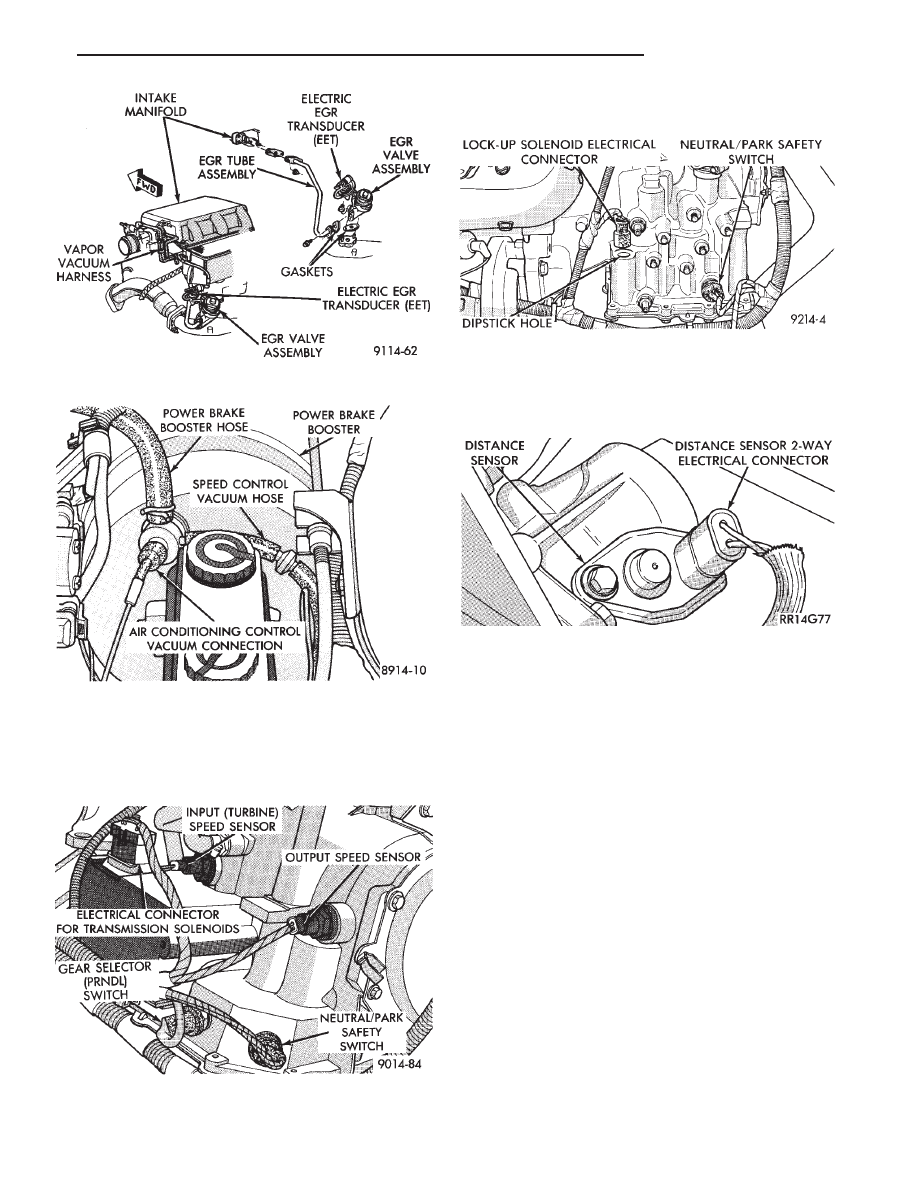Chrysler Town & Country/Voyager, Dodge Caravan, Plymouth Voyager. Manual - part 30

(22) Check engine harness to main harness electri-
cal connections.
(23) Check all automatic transmission electrical con-
nections (Fig. 15 or 16).
(24) Check the vehicle distance sensor electrical
connection (Fig. 17).
(25) Inspect the engine controller 60-way electrical
connector for damage or spread terminals. Verify the
60-way connector is fully inserted into the socket of the
engine controller (Fig. 18). Ensure that wires are not
stretched or pulled out of the connector.
(26) Verify that all electrical connectors are fully
inserted into relays (Fig. 19 and Fig. 20).
(27) Check Battery Cable Connections.
(28) Check hose and wiring connections at fuel
pump. Check that wiring connector is making contact
with terminals on pump.
ON BOARD DIAGNOSTICS
The engine controller has been programmed to moni-
tor many different circuits of the fuel injection system.
If a problem is sensed with a monitored circuit often
enough to indicate an actual problem, the controller
stores a fault. If the problem is repaired or ceases to
exist, the engine controller cancels the Fault Code after
51 vehicle key on/off cycles.
Certain criteria must be met for a fault code to be
entered into engine controller memory. The criteria
may be a specific range of engine RPM, engine tem-
perature, and/or input voltage to the engine controller.
Fig. 15 Electronic Automatic Transmission Electrical
Connections
Fig. 13 EGR System Vacuum Hose Connections
Fig. 14 Power Brake Booster and Speed Control
Vacuum Hose Connections
Fig. 16 Automatic Transmission Electrical Connec-
tions
Fig. 17 Distance Sensor Electrical Connector
.
FUEL SYSTEM
14 - 67